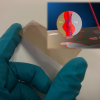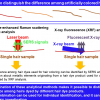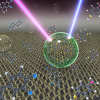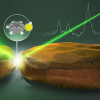SERS News
A new study has improved a chemical sensing chip based on surface-enhanced Raman spectroscopy (SERS) that aims to identify drugs and other trace chemicals quickly and accurately.
Scientists at Tokyo University of Science have combined SERS and XRF to distinguish between differently dyed individual hair strands for forensic investigations.
A technique to combine the ultra-sensitivity of surface enhanced Raman scattering (SERS) with a slippery surface invented by researchers at Pennsylvania State University, University Park, PA, USA, will make it feasible to detect single molecules of a number of chemical and biological species from gaseous, liquid or solid samples.
A surface enhanced Raman spectroscopy (SERS) method is to be used to study pesticides on and their penetration into fresh intact produce.
Scientists at EPFL have shown how a light-induced force can amplify the sensitivity and resolution of SERS for the study of single molecules.





